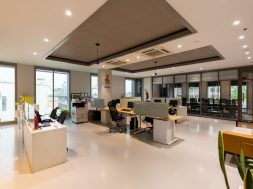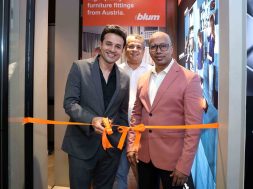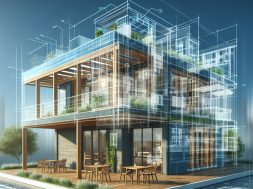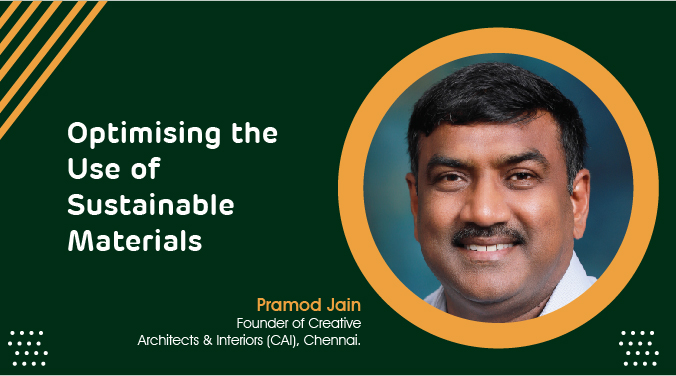Smart architecture is optimistic and graceful

Born in Eindhoven, the Netherlands, Robert Verrijt received a Master of Science in Architecture at the TUDelft in 2003. After arriving in Mumbai in 2006, he set up the practice Architecture BRIO together with Shefali Balwani. Vikas Bhadra catches up with the architect.
For someone who was educated in Europe and is exposed to the glitz and glamour to the skylines of Mumbai city, Robert Verrijt is pretty grounded when it comes to his idea of good design.“Good design will always be important but not in the traditional sense. The traditional idea of what is good design, the kind of design that is celebrated and awarded in the media, serves mostly the elite. However we need a new awareness of what is good design. Good design is design for good. Design that goes beyond this idea of worshipping extravagant building forms and excessive consumption of material and resources. We need to start addressing the needs of the masses with smart and sustainable solutions.Good design is if a solution can both address a need and has social relevance. We think that by combining this with an entrepreneurial approach, that makes business, architectural agency can regain a position of relevance.”
Robert arrived in the city in 2006 and actively started working towards incepting Architecture BRIO. “Architecture BRIO was initiated just before the financial crisis of 2007/08. In retrospect this was perhaps a blessing. Because it allowed us to slowly build up our practice, build up a client network and develop a critical engagement with the profession. We were able to develop an understanding what we did and what we definitely did not want to do. It also prevented us from being typecast as specialists in a certain type of project. It allowed us to build a diverse project portfolio.”
“Our first project, the House on a Stream introduced our practice to the Indian design world and a global audience. In this project we were very clear from the very beginning that we wanted the element of the stream to take centre stage and weave the house around it. With that premise in mind, nature here became the centre stage around which architecture revolved. We’ve always been drawn to the duality that exists between making bold architectural statements (the house was completely cast in concrete) and at the same time not allowing architecture to over power or dominate the surrounding.”
Architecture BRIO’s work portfolio speaks a lot, the size, scale and the nature of the projects executed act as a testimony. “The projects that we do are extremely varied in type and scale. It ranges from large housing projects (Goa), to interiors (Urban Green Home) to micro cabins (the MiCabin/the Podstory, schools (the Etania Green School, artist workshops (Mumbai Artist Workshop) and weekend homes. We are fully aware that this goes against the grain of what people expect from you. People expect you to be specialised and doing ONE thing very well. We don’t believe in that. We believe that by doing many different things, we are able to be more particular and articulate about what each project is about. Instead of repeating one trick multiple times over and supposedly perfecting that, we tend to approach projects from an outsiders perspective, creating new possibilities. There’s a cross fertilisation that happens across these different projects. And we believe it benefits our work.”
In a timeline when India is spearheading the Smart Cities mission and smart homes are in vogue, a question arises, how can architecture be smart, well Robert has the answer “Smart architecture is optimistic and graceful, It both utilises millennia-old knowledge of how to live in symbiosis with nature, and is future looking. Smart solutions are those that address multiple things at the same time. For example building the Riparian House partly underground just below the top of a hillock allowed us to be hidden from view, enjoy a great view from within and also benefit from earth cooling. Re-using shipping containers at the Etania Green School in Malaysia not only lifted the school off the ground to prevent it from flooding, was useful as store rooms, but also stabilised the structure in a very cost effective way. Reimagining a standard plotted development as a wetland at the Waikiki project, saved the client big bucks by not having to fill all the land. And in addition it created a unique living experience close to water and nature that is also future proof and climate resilient since the stilted structure already anticipate rising sea levels.”
Architecture and design are in a way rooted to our identities. The idea of being smart in the architecture and design sense as also the city sense has many a times given rise to a doubt, as in, how is all of that set to change. “We are very interested in thinking about this topic from the perspective of identity,” says Robert “We have always held the position that architecture that reflects the identity of “a people” is irrelevant, highly restrictive and dangerous. Especially considering the increasingly non-sedentary nature of people and transversality of culture, architecture will rapidly loose meaning if it is to derive its associative value through the identity of a culture. Of course what’s even more problematic is when you go a step further and ask “whose culture?” and “whose culture during which epoch?” What are those Indian design sensibilities really? Is an Indian CEO of a multinational company based in Mumbai more global than a villager who educates himself on an MIT course via his mobile phone? Architecture has the potential to include people, but risks to exclude people just as much. The architecture that we’ve worked on have therefore intentionally been rooted much more in a “place”, a “climate” and a “material culture”. And on an associative level it has been cross-cultural.”
This cross cultural dynamics of the firm has been noticed by Indians and Europeans alike “When we lectured in the Netherlands last year, I was surprised to hear that our architecture has a particular Indian character, while in India we are always seen very much as a practice with a European sensibility. Inspiration and constraints come to us in many ways and forms. We enjoy stepping out of our skin and comfort zone and think and design in totally different modes. In a world where inspiration can come from any part of the world in an instant from your mobile phone, it’s more important to have a critical attitude. What lessons can different cultures teach you. There is much to gain, but equally a lot of potential to misinterpret and misuse.”
As time goes by the role of architecture has gone much beyond form and function alone, in a way it has now become a discourse. “Absolutely,” says Robert “For example in our architecture we often emphasise on the importance of establishing significant relationships between the built landscape and the organic world. We reflect on our interactions with different environments and how architecture as a manmade construct can contribute positively and integrate in mutually supportive ways in the natural environment. This meeting point between these two worlds can only be engaged with, in a deep understanding through a discourse on multiple levels. While the influence of the urban world keeps expanding, we all have a yearning to retreat in a natural world. But just stepping into this pristine, raw and undisturbed landscape, already transforms it. So when you intervene with an architectural project, you need to be fully aware of what you are doing. How do you avoid any lasting impact, while at the same time create an experience that treats visitors as responsible people and makes them more conscious of their position within the natural world. And, hopefully, makes them eventually act more responsibly towards the environment in their daily life.”
“Today,” Robert continues “Our practise has grown to working on projects across the country and abroad. In unique and beautiful locations like Shimla, Sitla, Dharamshala, in the south in Goa, Malaysia and the Philippines. Our geographical reach keeps expanding and we will continue to work on a more international scale and bring our knowledge of building, of the past 14 years, to other parts of the world. We are to start the construction of the Yoga and Health Retreat in Dharamshala. The yoga retreat is conceptualised as an extrusion of its terraced Himalayan landscape. One could imagine that an incidental geological formation pushed up a section of the terraces in the shape of a malformed asymmetrical three winged boomerang. Underneath, above and between the ground plane and the roof, the yoga retreat is a device to experience the landscape in diverse ways.”
“We are also working on a new housing development in a stunning location in Goa. It will explore how you can intervene in ecologically sensitive area, and instead of destroying the environment, improve biodiversity and quality of life at the same time. And something that is on the design table right now is the design of a product line called Podstories. It will be a set of products developed for net positive outdoor living for a client who wishes to develop single cabin properties in unique, breathtaking and isolated locations in India. The product line will comprise of a micro cabin for two, a hot tub, a Dutch oven, a swing, and other outdoor furniture and equipment.”
Cookie Consent
We use cookies to personalize your experience. By continuing to visit this website you agree to our Terms & Conditions, Privacy Policy and Cookie Policy.









